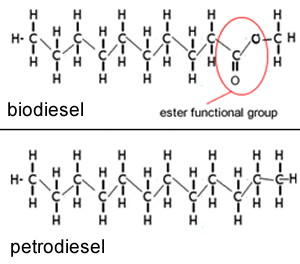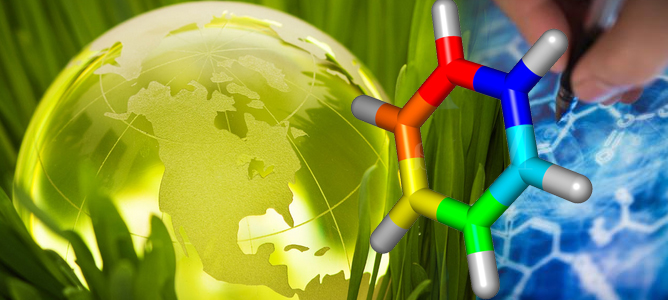The most reliable way to tell fossil fuels apart from biofuels lies in their carbon isotope composition: In fossil fuels, all of the carbon14, which has a 5, 730year halflife, has undergone. Focusing on today's major fuel resources ethanol, biodiesel, wood, natural gas, petroleum products and coal this book discusses the formation, composition and properties of the fuels, and the ways in which they are processed for commercial use. The bottom line is that producing biofuels requires greater expertise in chemistry and an expertise in biology that is hardly considered when dealing with fossil fuels. Variety Petroleum is a rather simple substance because almost all of the molecules are hydrocarbons. Nobel prize winner finds most biofuels could be worse for the environment than fossil fuels Nobel prize winner finds most biofuels could be worse for the environment than fossil fuels This site uses cookies from Google and other third parties to deliver its services, to personalise adverts and to analyse traffic. Chemistry of fossil fuels and biofuels Harold Schobert. (Cambridge series in chemical engineering) ISBN (Hardback) 1. S368 2012 The reduction of these energy and other inputs provides real challenges for chemists and engineers, and in collaboration with oil and auto companies, the chemical industry is devoting large resources to the research and development of renewable fuels. Biofuels Fuels and fuel chemistry. A fuel is any compound that has stored energy. This energy is captured in chemical bonds through processes such as photosynthesis and respiration. Energy is released during oxidation. The most common form of oxidation is the direct reaction of a fuel with oxygen through combustion. Wood, gasoline, coal, and any number of other fuels have energyrich chemical bonds. These are the sources and citations used to research Comparing fossil fuels and biofuels. This bibliography was generated on Cite This For Me on Monday, June 1, 2015 A biofuel is a fuel that is produced through contemporary biological processes, such as agriculture and anaerobic digestion, rather than a fuel produced by geological processes such as those involved in the formation of fossil fuels, such as coal and petroleum, from prehistoric biological matter. Biofuels can be derived directly from plants (i. energy crops), or indirectly from agricultural. In this article we look at the chemistry of biofuels to get a better idea of just how they differ from other fuels. Diesel and Biodiesel Petroleum diesel (petrodiesel) is a product produced through the fractional distillation of crude oil. Fossil fuels release carbon dioxide, that has been locked away for millions of years, into the atmosphere. Chemistry Fuels and Pollution This Chemistry quiz is called 'Chemistry Fuels and Pollution' and it has been written by teachers to help you if you are studying the subject at high school. Chemistry of Fossil Fuels and Biofuels Focusing on todays major fuel resources ethanol, biodiesel, wood, natural gas, petroleum products, and coal this book discusses the formation, composition and A survey of research findings focusing on issues related to the pros and cons of using biofuels to substitute conventional fuels, namely, fossil fuels is presented in this paper. By avoiding deforestation and by reforesting harvested areas, up to onethird of current carbon dioxide emissions from fossil fuels could be sequestered in the biosphere, the researchers write. Among the leading contenders are biofuels renewable, cleanburning fuels made from plant and animalbased source materials like corn, soybeans, discarded vegetable oil or animal fat. We hear a lot about biofuels and fossil fuels in the news, but sometimes the two terms can get tangled in our minds. in Buy Chemistry of Fossil Fuels and Biofuels (Cambridge Series in Chemical Engineering) book online at best prices in India on Amazon. Read Chemistry of Fossil Fuels and Biofuels (Cambridge Series in Chemical Engineering) book reviews author details and more at Amazon. Free delivery on qualified orders. This is one of the most remarkable books on chemistry that has been my good fortune to encounter. Using the skeleton of fuels, Professor Schobert has fleshed out this skeleton with a vast amount. Focusing on today's major fuel resources ethanol, biodiesel, wood, natural gas, petroleum products and coal this book discusses the formation, composition and properties of the fuels, and. Chemistry of Fossil Fuels and Biofuels (Cambridge Series in Chemical Engineering) Kindle edition by Harold Schobert. Download it once and read it on your Kindle device, PC, phones or tablets. Use features like bookmarks, note taking and highlighting while reading Chemistry of Fossil Fuels and Biofuels (Cambridge Series in Chemical Engineering). Fossil fuels sources burn coal or hydrocarbon fuels, which are the remains of the decomposition of plants and animals. There are three main types of fossil fuels: coal, petroleum, and natural gas. Another fossil fuel, liquefied petroleum gas (LPG), is principally derived from the production of natural gas. Fossil fuels are created by tiny dead animals that sift down to the bottom layers in the sea. Now, as more and more animals die, the ones underneath the layers of earth are subject to a lot of. Kp Chemistry of Fossil Fuels and Biofuels av Harold Schobert p Bokus. Fossil fuels are hydrocarbons, primarily coal, fuel oil or natural gas, formed from the remains of dead plants and animals. In common dialogue, the term fossil fuel also includes hydrocarbon. Focusing on today's major fuel resources ethanol, biodiesel, wood, natural gas, petroleum products and coal this book discusses the formation, composition and properties of the fuels, and the ways in which they are processed for commercial use. Focusing on todays major fuel resources: ethanol, biodiesel, wood, natural gas, petroleum products and coal this book discusses the formation, composition and properties of the fuels, and the ways in which they are processed for commercial use. VCE chemistry fossil fuels and biofuels exam question with examination reports and revision notes. I salute Pamela Zurer's editorial, Biofuels Reality Check (CEN, July 24, page 3). Reducing our dependence on fossil fuels and our output of CO 2 emissions fits with the green chemistry principle. Less common biofuels are also being researched and improved as people seek to find alternatives to fossil fuel. A woodgas burner, for example, can be mounted right on a tractor. UNESCO EOLSS SAMPLE CHAPTERS PETROLEUM ENGINEERING DOWNSTREAM Relation Between Biofuels Versus Fossil Fuels Lus Cortez, Rogrio Cezar de Cerqueira Leite Encyclopedia of Life Support Systems (EOLSS) obtained from oil seeds such as soybean, rapeseed and palm. In terms of usability and range, its hard to beat liquid fuel. Join us as Jennifer Holmgren, the CEO of LanzaTech breaks down the different modern refining processes and chemistry being used to produce new, carbon fuels that dont require traditional drilling methods. the comparison of fossil fuels (coal, crude oil, petroleum gas, coal seam gas) and biofuels (biogas, bioethanol, biodiesel) with reference to energy content, renewability and environmental impacts related to sourcing and combustion 'This wellorganized, wellwritten, and factladen book is the product of mounting societal attention to the consequences of the the use of carbon fuels for global climate change an authoritative and detailed explication of the life history of fossil and renewable biofuels. Focusing on today's major fuel resources ethanol, biodiesel, wood, natural gas, petroleum products and coal this book discusses the formation, composition and properties of the fuels, and the ways in which they are processed for commercial use. Focusing on today's major fuel resources ethanol, biodiesel, wood, natural gas, petroleum products and coal this book discusses the formation, composition and properties of the fuels, and the ways in which they are processed for commercial use. 'This wellorganized, wellwritten, and factladen book is the product of mounting societal attention to the consequences of the the use of carbon fuels for global climate change an authoritative and detailed explication of the life history of fossil and renewable biofuels. In 2000, fossil fuels accounted for almost 90 percent of the world's energy production (see Table 1). Nuclear power and hydroelectric plants supplied about 13 percent and geochemical, wind, and solar energy sources supplied only a fraction of 1 percent. A Chemistry World subscription brings you all the research, news and views from the global chemical science community. Regularly updated and packed full of articles, podcasts and videos, there is no better way to keep in touch with the chemical sciences. GCSE Physics Revision: Fossil fuels You can watch all my videos at In this video, we look at the energy changes that take place in a power station burning fossil fuels. Focusing on today's major fuel resources ethanol, biodiesel, wood, natural gas, petroleum products and coal this book discusses the formation, composition and properties of the fuels, and the ways in which they are processed for commercial use. Science Notes: Chemistry of Fossil Fuels. Combustion and Energy Release The chemistry principles previously described can be used to describe the burning of methane (CH 4, marsh or natural gas), or of carbon in coal. Combustion involves combinations of the fuel with oxygen. The Biofuels vs Fossil Fuels unit has students explore the similarities and differences between fossil fuels and biofuels. In the process, students investigate the carbontransforming processes of combustion, photosynthesis, fermentation and respiration. Chemistry of Fossil Fuels and Biofuels. [Harold H Schobert Discusses the formation, composition, properties and processing of the principal fossil and biofuels, ideal for graduate students and professionals. Chemistry Biofuels: The carbon equation This chemistry lesson is all about biofuels, as a sustainable alternative to fossil fuels, and the chemical reactions involved in making them. Chemistry of Fossil Fuels and Biofuels Focusing on todays major fuel resources ethanol, biodiesel, wood, natural gas, petroleum products, and coal this book discusses the formation, composition and Fossil fuels are mainly used to power our transport vehicles. Fuels used are petroleum, diesel and LPG. These fuels add CO2 emissions to the atmosphere as well as other pollutants. Focusing on today's major fuel resources ethanol, biodiesel, wood, natural gas, petroleum products and coal this book discusses the formation, composition and properties of the fuels, and the ways in which they are processed for commercial use. Focusing on today's major fuel resources ethanol, biodiesel, wood, natural gas, petroleum products and coal this book discusses the formation, composition and properties of the fuels, and the ways in which they are processed for commercial use..











